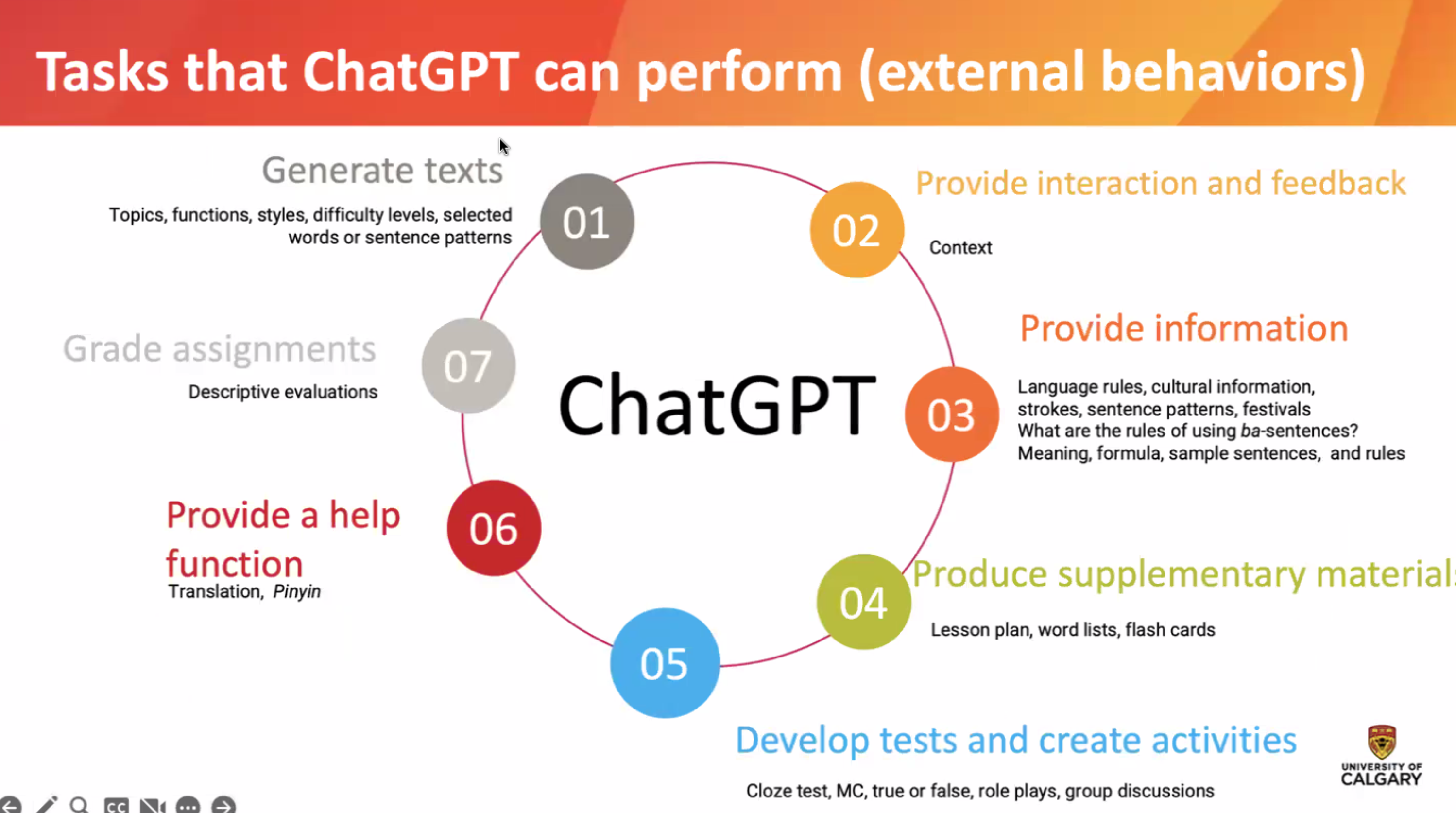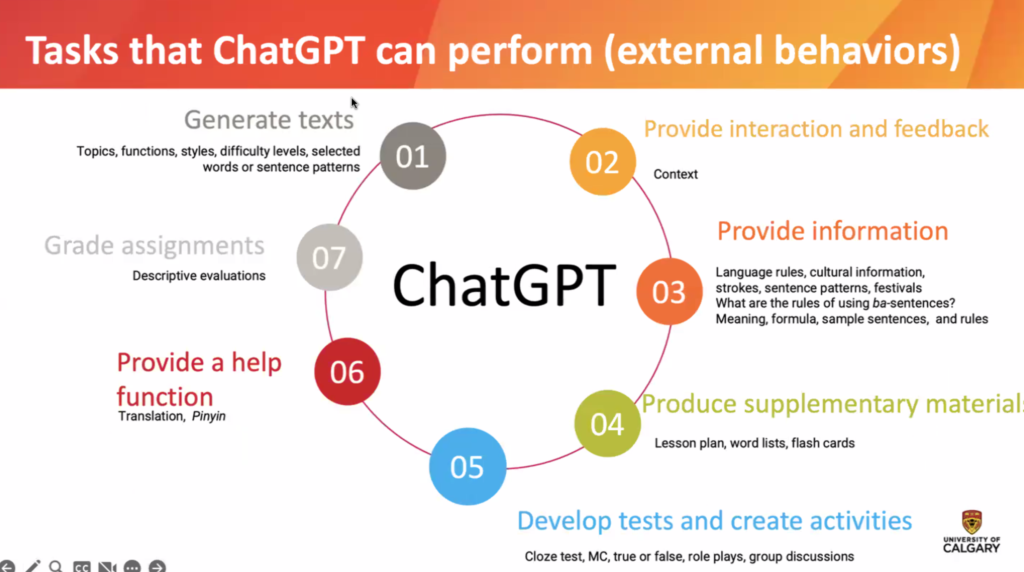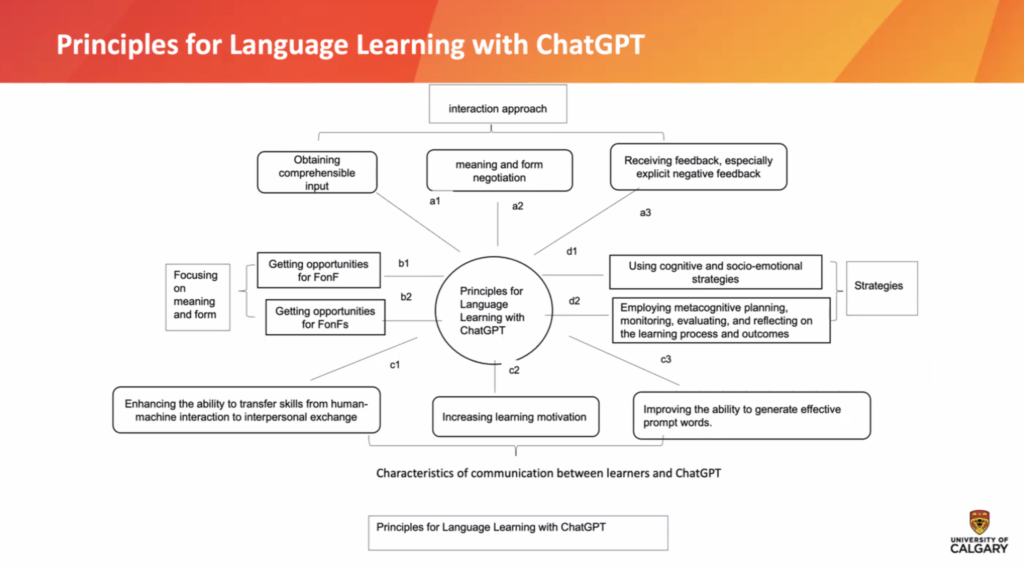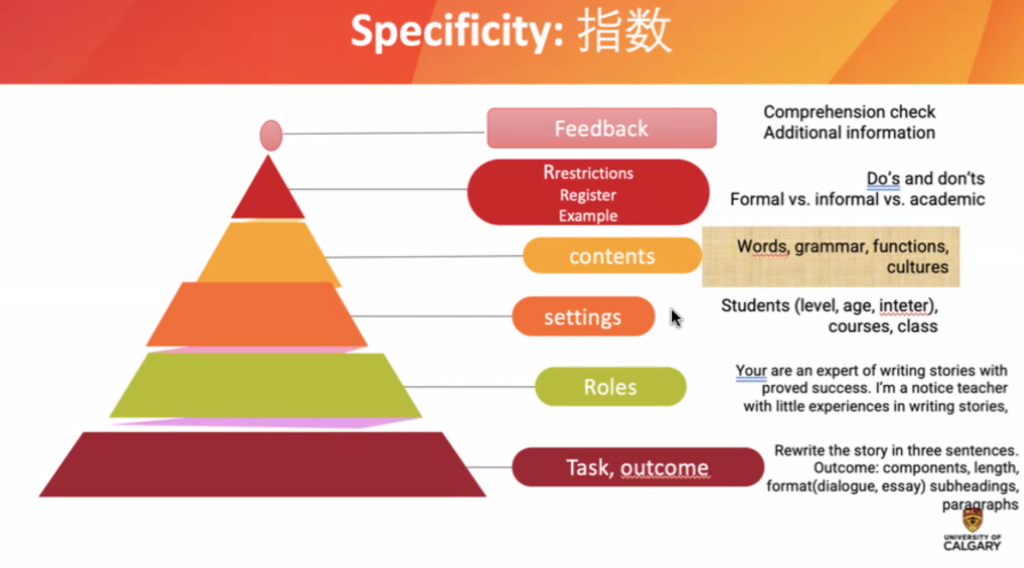Sharing Generative AI Practice

This morning I had an opportunity to tune into a PD event hosted via the University of Regina. This post will serve as my reflection on this learning experience:
Join us for this online panel discussion as three faculty members share their experiences integrating generative AI into their teaching practices. These individuals include:
Dr. Wei Cai – Professor in the Division of Chinese Studies and Japanese Studies in the School of Languages, Linguistics, Literatures, and Cultures at the University of Calgary.
Dr. Paul Sinclair – Associate Professor of Business Communications in the Faculty of Business Administration at the University of Regina.
https://uregina.libcal.com/event/3801752
“There should be a principled approach to using ChatGPT for language learning”
Tasks that Chat GPT can perform

- Creation of flashcards
- While AI can assess student work, it should not be done as it violates intellectual property rights and assessment ethics
- Learn more about how to use AI effectively with these prompt engineering tips
- Teachers’ monitoring is important, it is up to you to assess any AI outputs that you get
- AI can be used to enhance metacognition. For example, ask AI to produce creations with deliberate errors related to grammar, vocabulary, content accuracy, cultural misunderstandings, etc


Learn more about making your own GPT HERE.